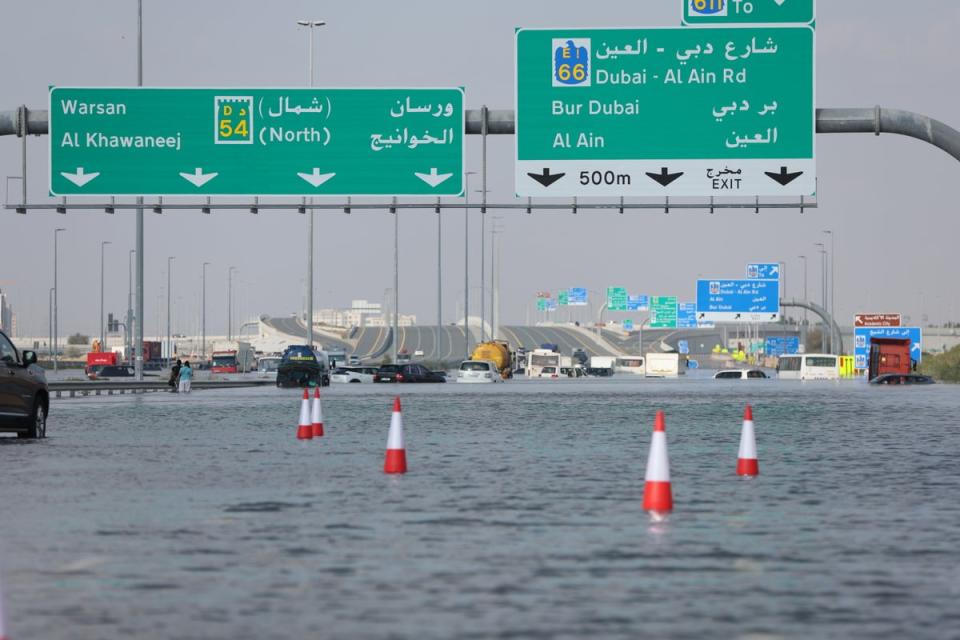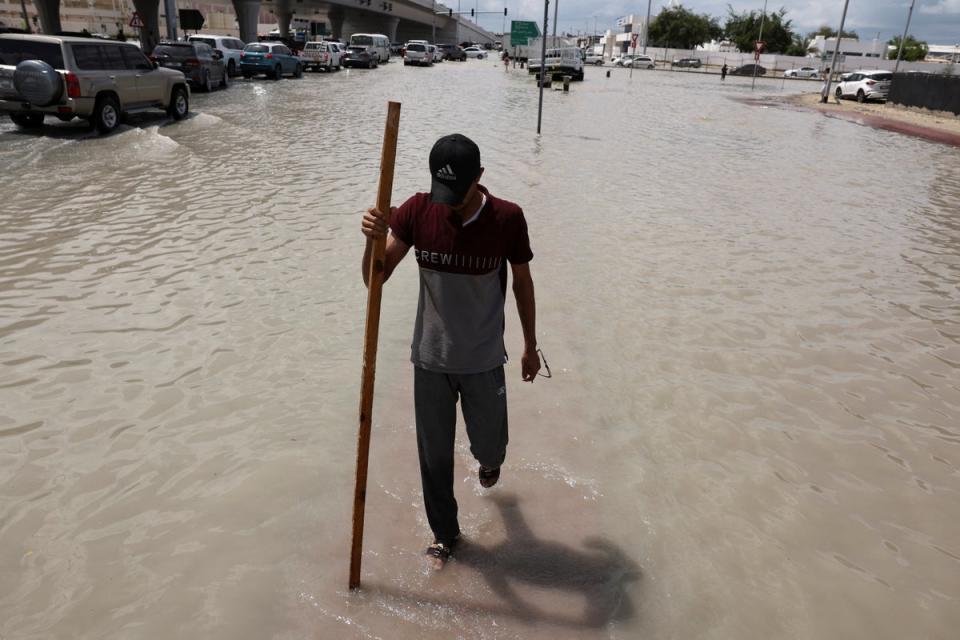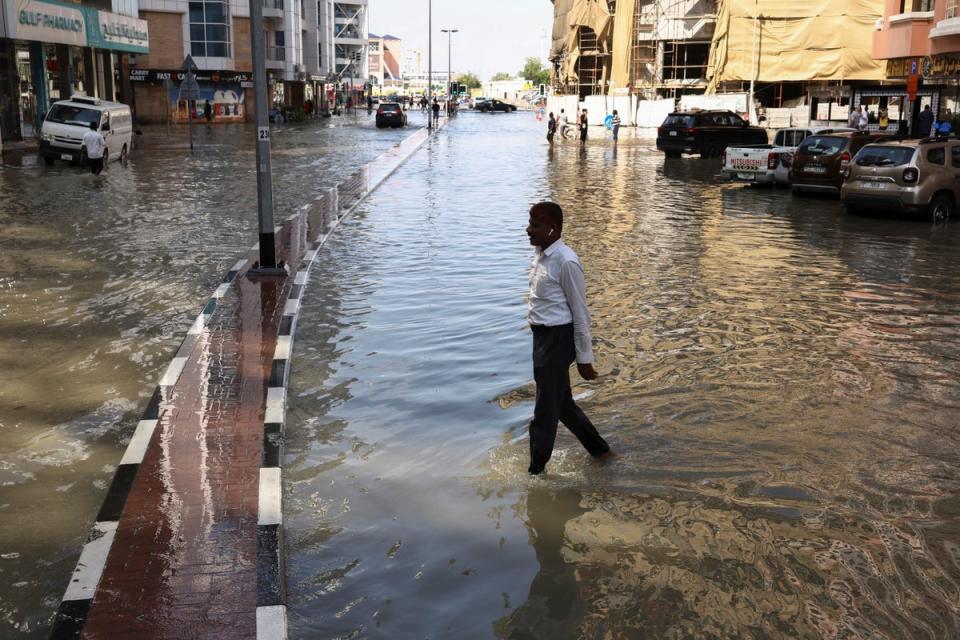What is cloud seeding and is it to blame for the freak Dubai flooding?
The United Arab Emirates was hit by a year’s worth of rainfall in 12 hours which caused severe flooding to the desert nation’s roads, houses and Dubai’s airport.
In dramatic footage, residents were seen jet-sking down streets, planes were forced to land in what looked like an ocean, and high-end Rolls-Royce cars were swept away in the deluge. By the end of Tuesday, the UAE more than 5.59 inches (142mm) of rainfall hit the country. An average year sees 3.73 inches (86mm) of rain.
The state-run WAM news agency called the rain “a historic weather event” that surpassed “anything documented since the start of data collection in 1949.”
Online speculation suggested the freak weather event could have been caused by “cloud seeding” - otherwise known as pluviculture.
But experts are not convinced, and have suggested global warming is the most likely cause. But how much do we know about the practice? We look at the concept of cloud seeding below.

What is cloud seeding?
Countries where rainfall is low, such as the UAE, encourage downfalls by shocking clouds artificially stimulating rainfall, a technique known as pluviculture - or cloud seeding.
It was first discovered in the 1940s and has been used in around 50 countries, including the United States, China, Australia, Thailand and Russia.
In the UAE, small government-operated planes fly through clouds burning special salt flares that encourage small rain droplets to stick together. Once heavy enough these larger droplets will then fall to Earth as rain.
Implemented by the UAE’s National Center of Meteorology (NCM), cloud seeding is part of an ongoing effort to curb the Gulf’s state’s lack of rainfall.

Was cloud seeding done before the UAE’s deluge?
Meteorologists at the NCM have been quoted as saying they flew six or seven cloud-seeding flights before the rainfall - which fueled online speculation that the floods were caused by the technology.
But after the event, Omar Al Yazeedi, the deputy director general of the NCM, said: “We did not engage in any seeding operations during this particular weather event.
“The essence of cloud seeding lies in targeting clouds at an earlier stage, prior to precipitation. Engaging in seeding activities during a severe thunderstorm scenario would prove futile.”
Flight-tracking data analysed by news agency AP, showed one aircraft affiliated with the UAE’s cloud-seeding efforts flying around the country on Monday.

Is cloud seeding to blame?
While an increasingly common practice, some scientists remain cautious about cloud seeding as it is still unknown how far the impacts of tampering with the Earth’s natural processes could go. Evidence of the effectiveness of the technique is not conclusive, some studies have shown that cloud seeding could only increase rainfall by up to 35%.
Ryan Maue, former chief scientist at the US National Oceanic and Atmospheric Administration told Al Jazeera: “If that occurred with cloud seeding, they’d have water all the time. You can’t create rain out of thin air per se and get 6 inches [152.4mm] of water.”
Other scientists say climate change in general is responsible for more intense and more frequent storms, droughts, flood and wildfires around the world - and is likely the cause of the UAE’s flooding.
Dim Coumou, a professor in climate extremes at Vrije Universiteit Amsterdam, said the thunderstorms and rainfall seen in the UAE has a strong correlation with global warming.
“This is because convection, which is the strong updraft in thunderstorms, strengthens in a warmer world,” he told the same publication.
And climate expert Mark Howden explained that global warming had caused “extraordinarily” warmer seas around Dubai - which when combined with warm air can cause sudden downpours like that seen in the UAE.
“This increases both potential evaporation rates and the capacity of the atmosphere to hold that water, allowing bigger dumps of rainfall such as what we have just seen in Dubai,” he added.

